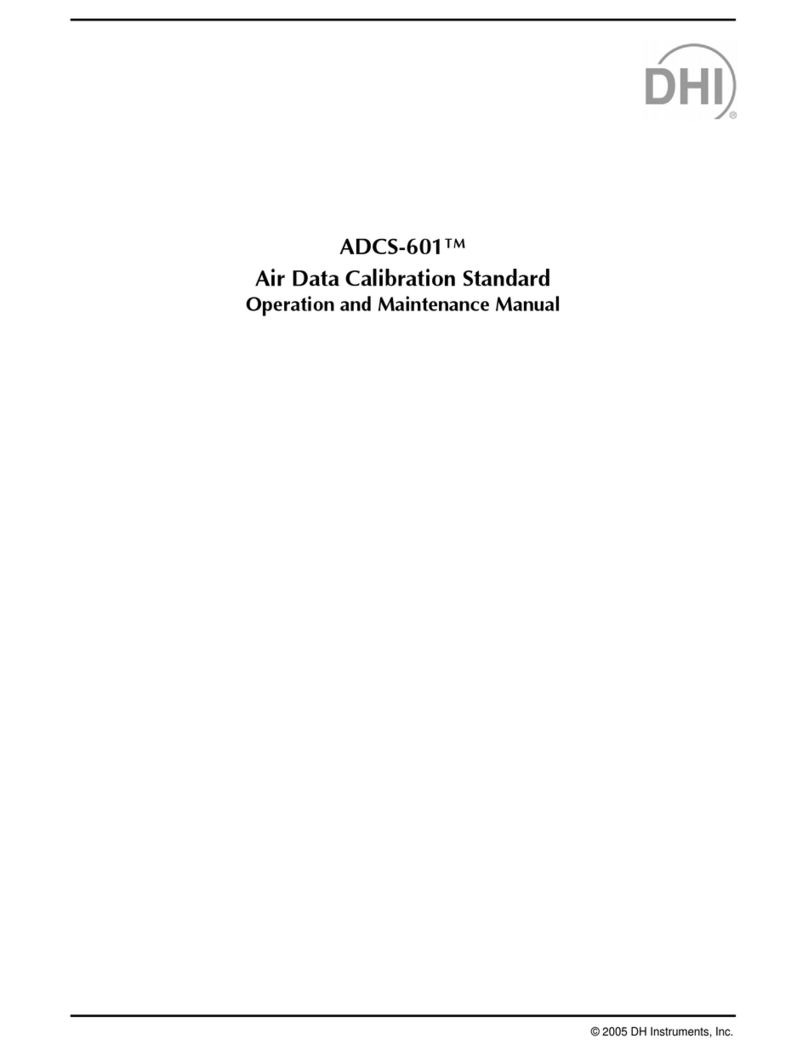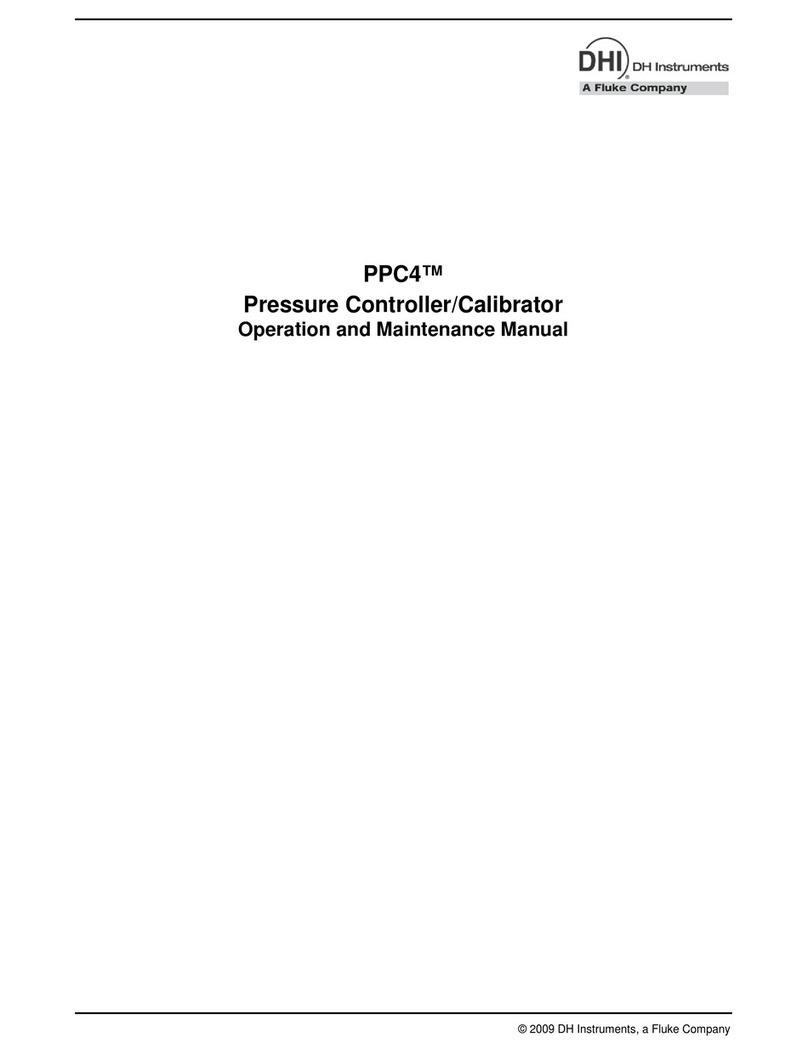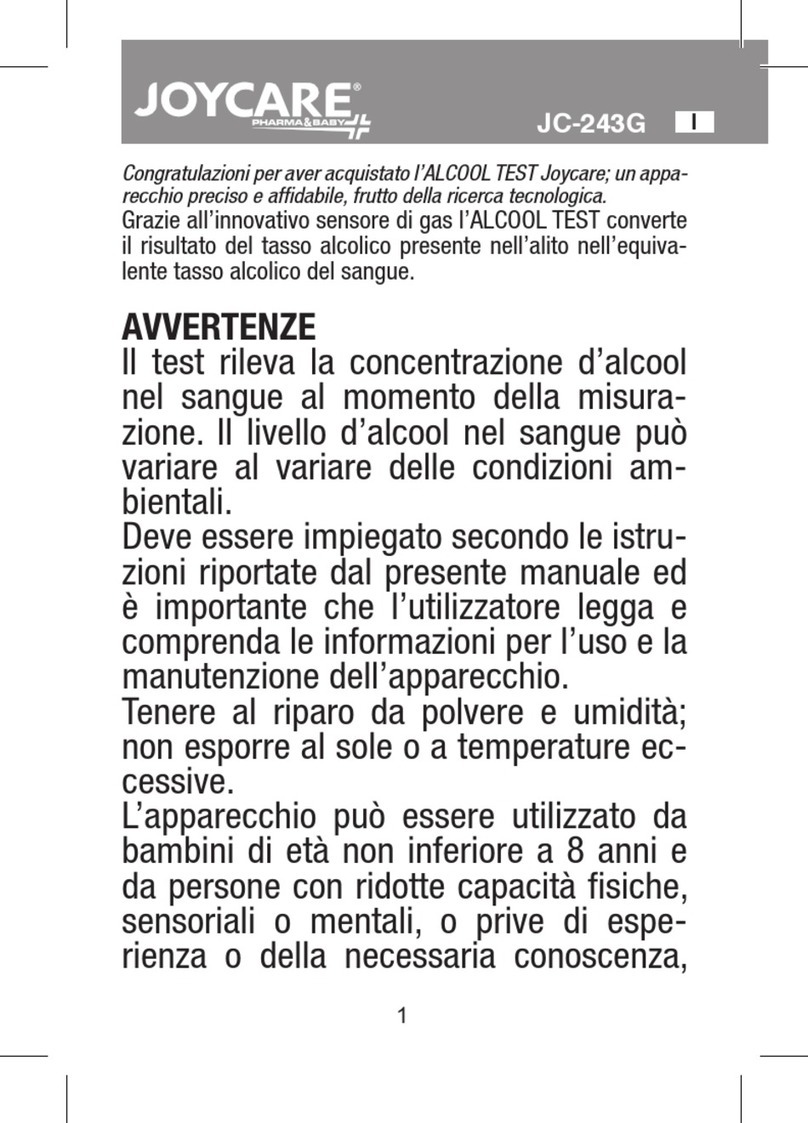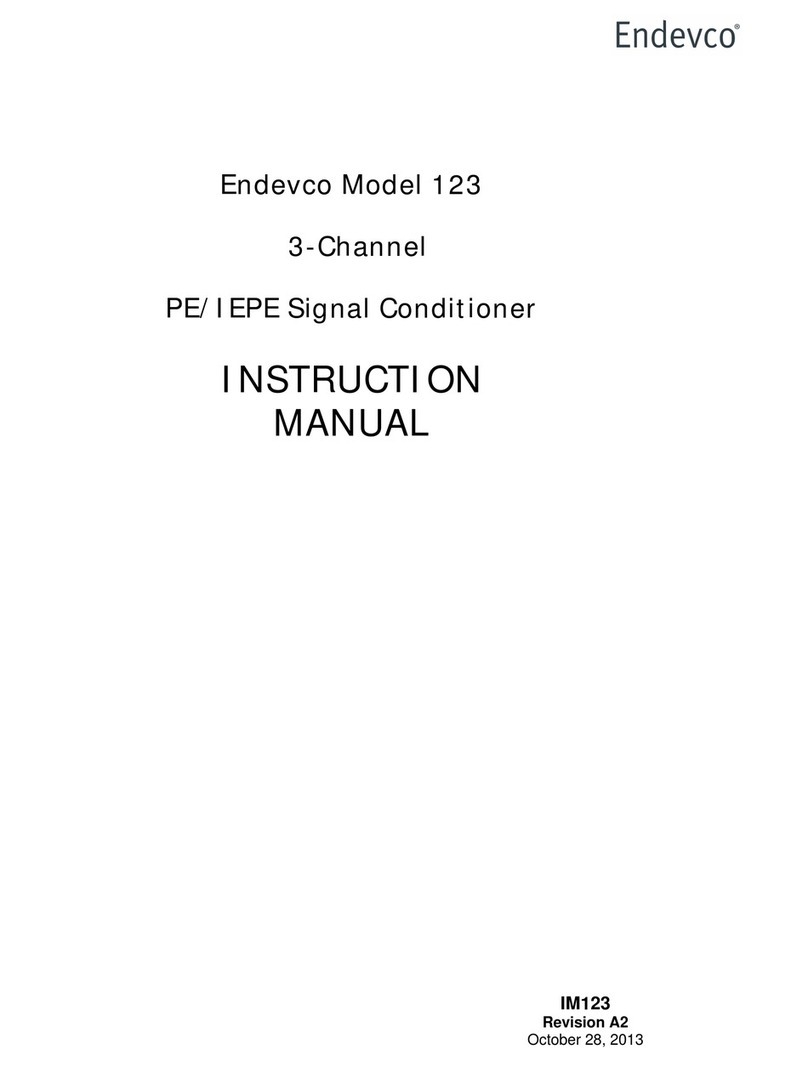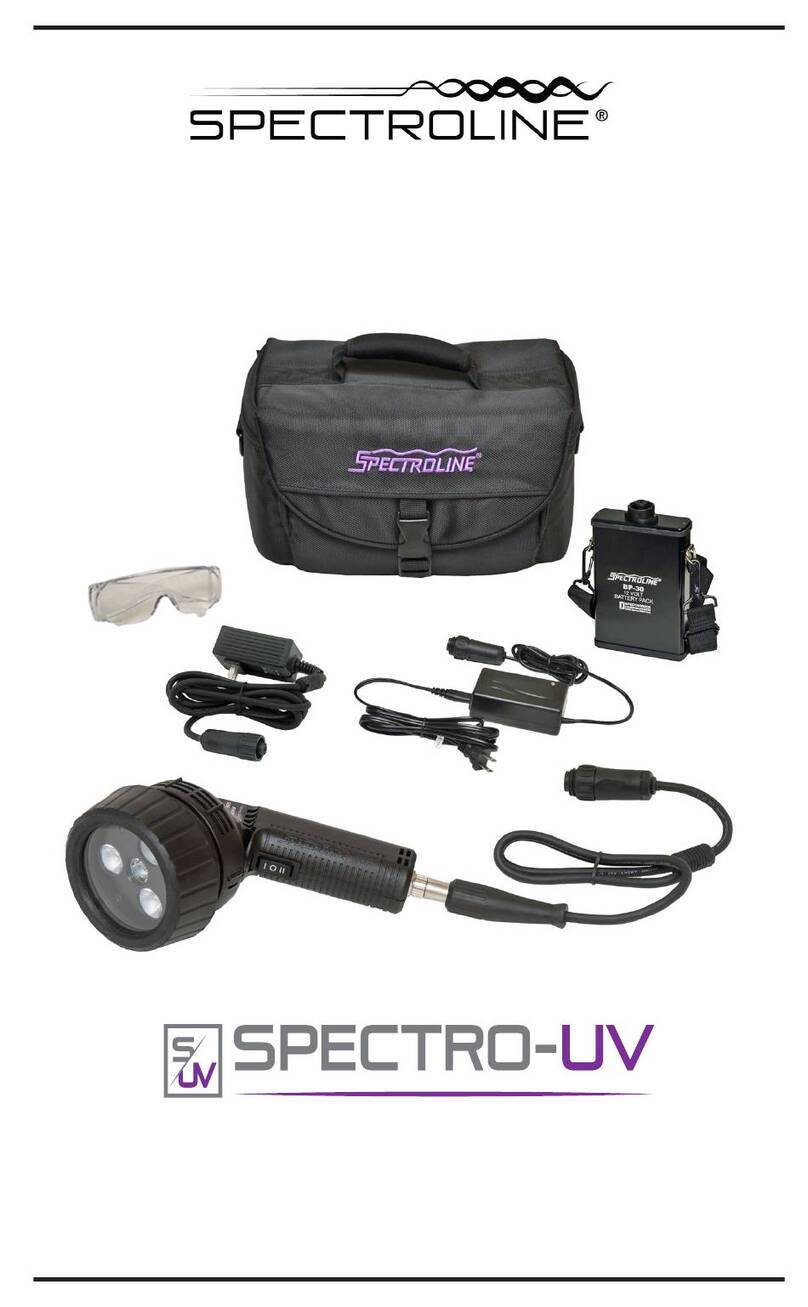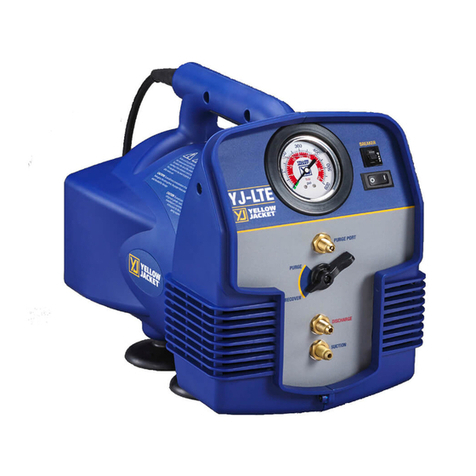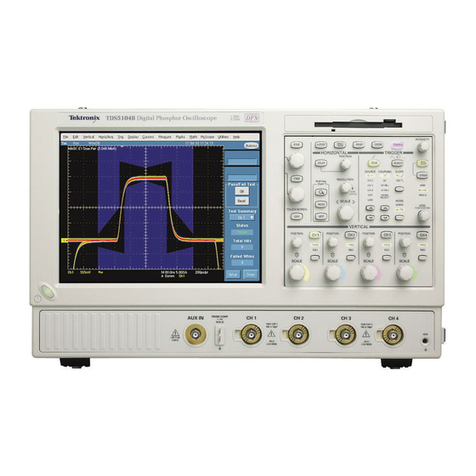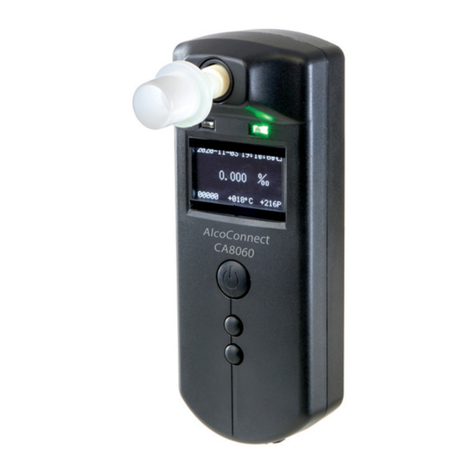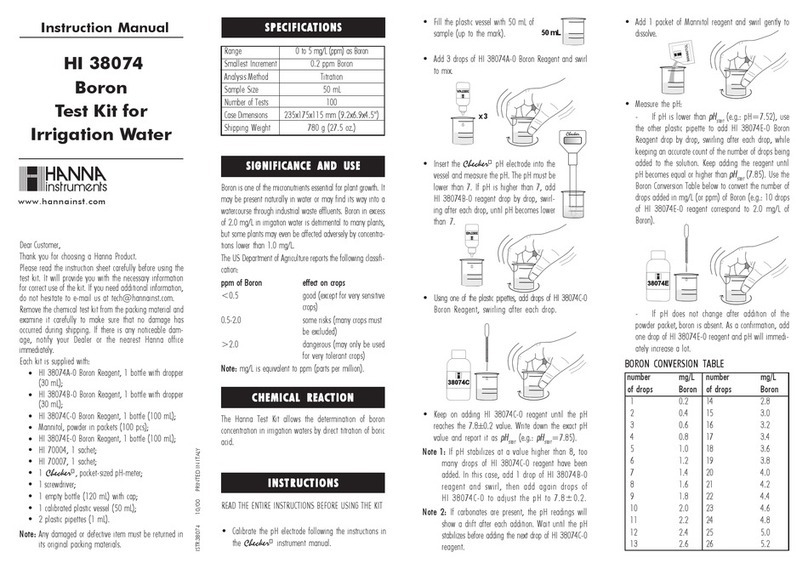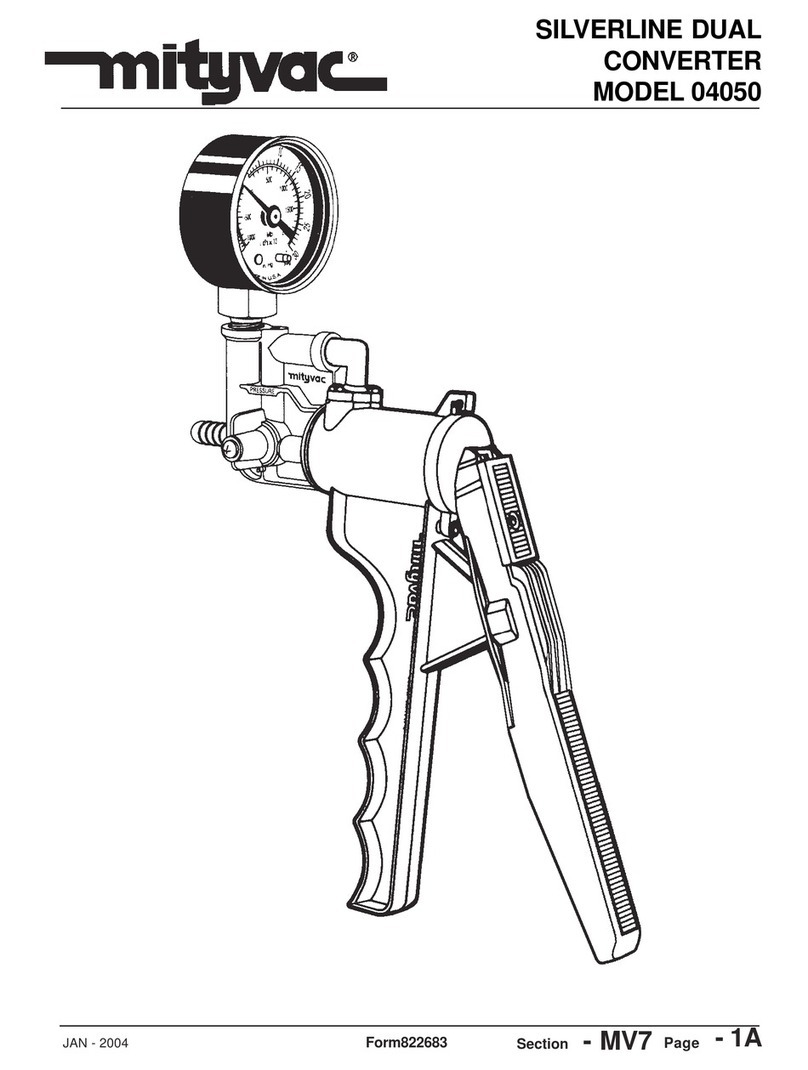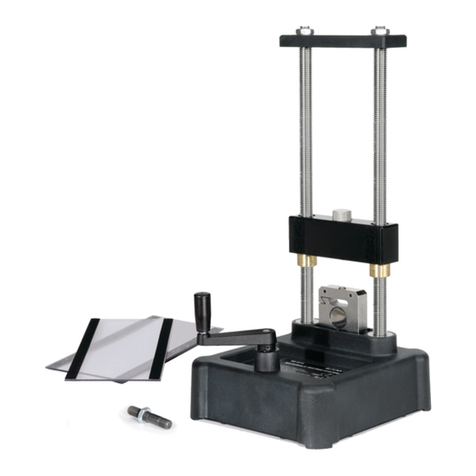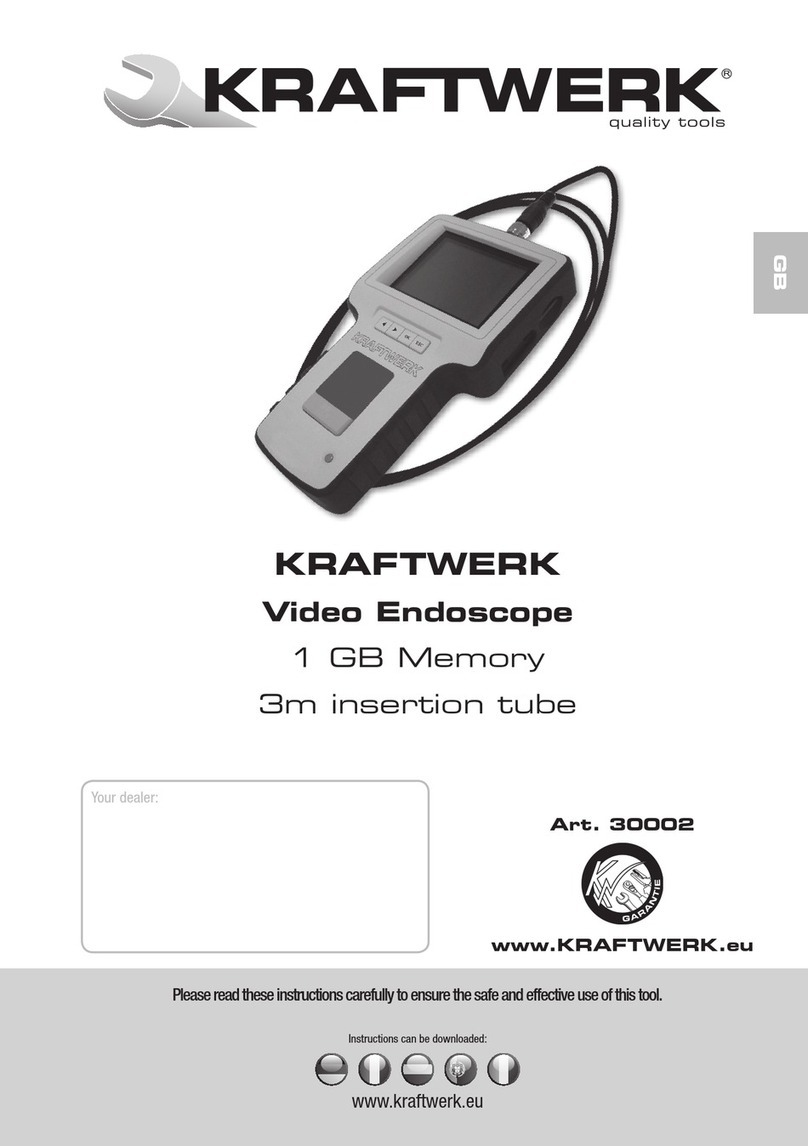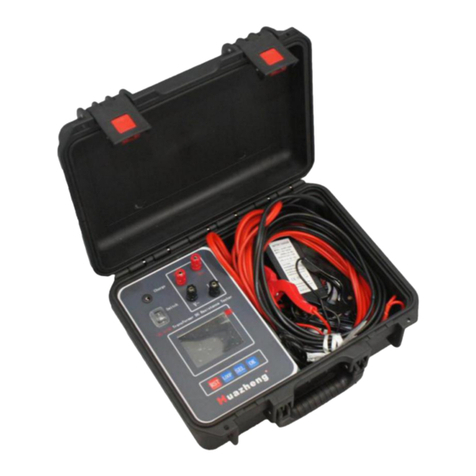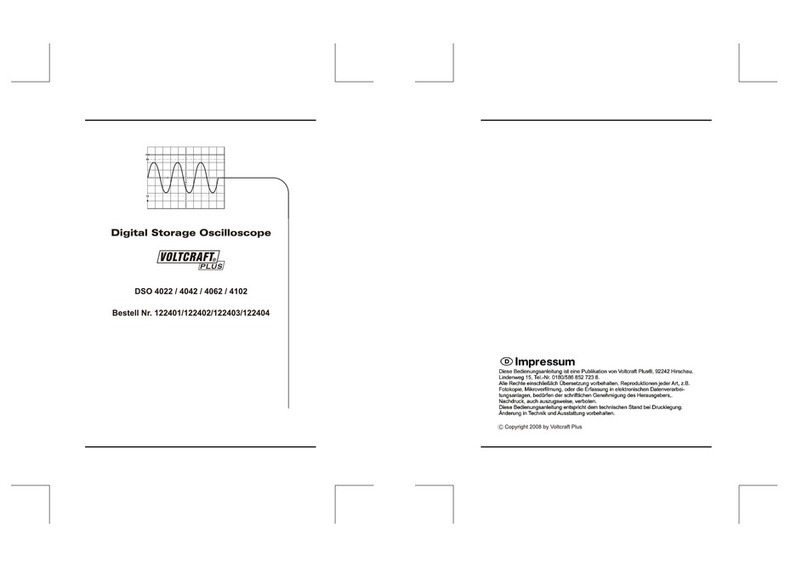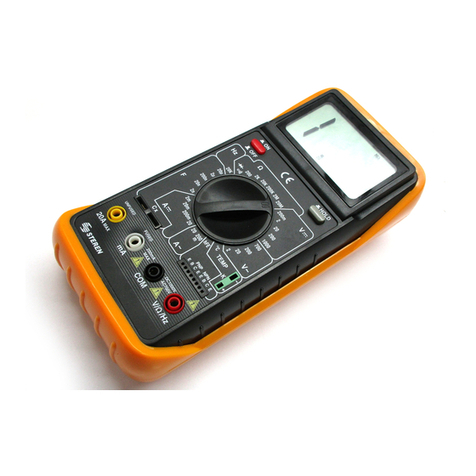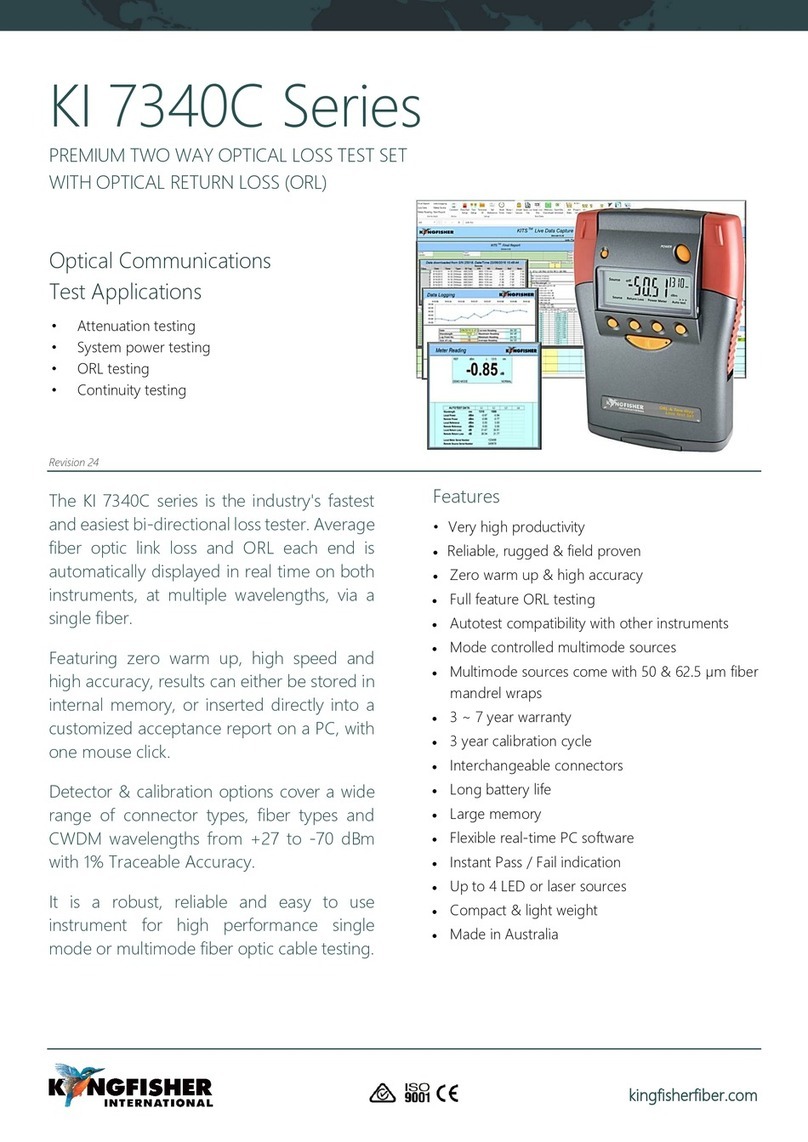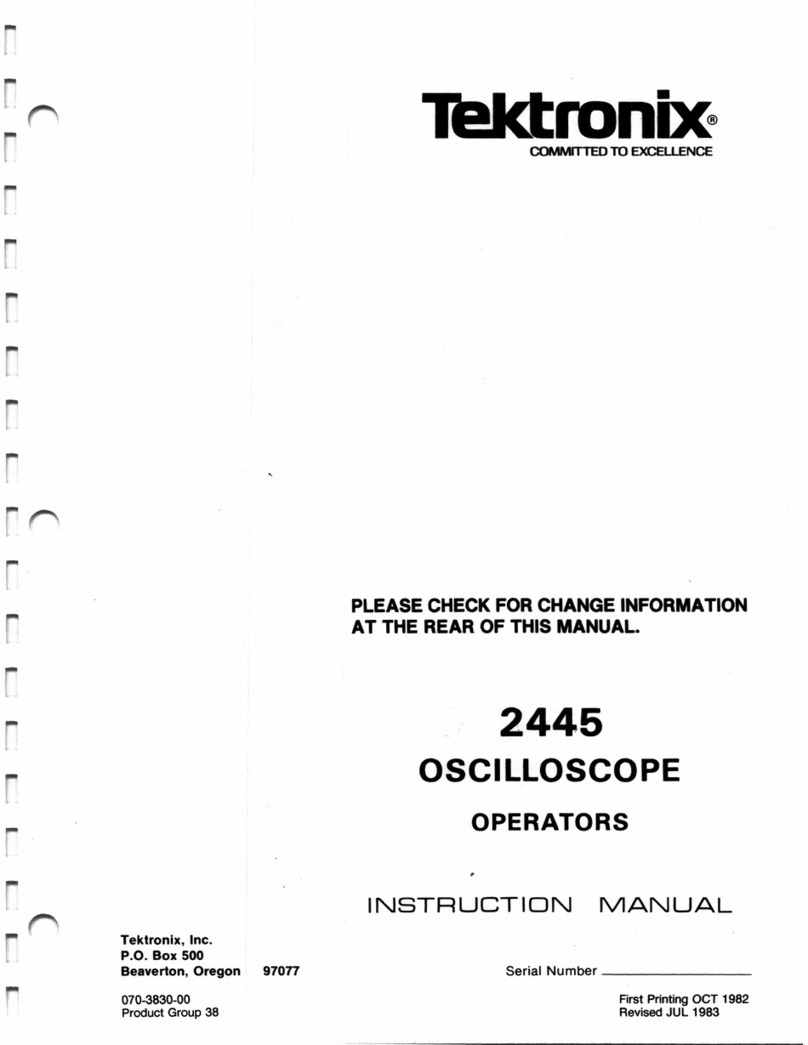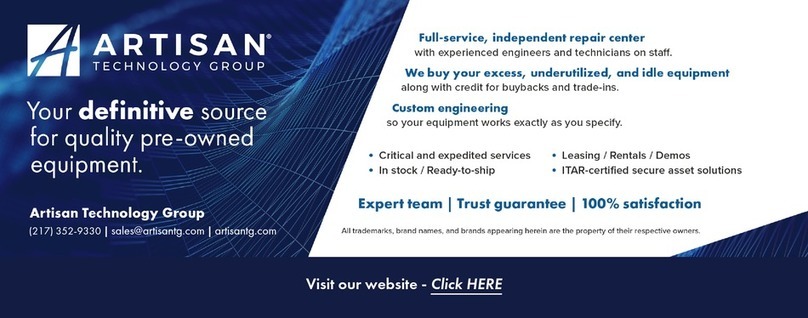DH Instruments BG0002 User manual

©2001 DH Instruments, Inc.
PPC2+ BG0002
Operation and Maintenance Manual
(Use with PPC2+ Operation
and Maintenance Manual)

PPC2+ BG0002 Operation and Maintenance Manual
©2001 DH Instruments, Inc.
High pressure liquids and gases are potentially hazardous. Energy stored in these liquids and gases can
be released unexpectedly and with extreme force. High pressure systems should be assembled and
operated only by personnel who have been instructed in proper safety practices.
©2001 DH Instruments, Inc. All rights reserved.
Information in this document is subject to change without notice. No part of this document may be reproduced or
transmitted in any form or by any means, electronic or mechanical, for any purpose, without the express written
permission of DH Instruments, Inc. 4765 East Beautiful Lane Phoenix AZ 85044-5318 USA.
DH Instruments makes sincere efforts to ensure accuracy and quality of its’ published materials; however, no
warranty, expressed or implied, is provided. DH Instruments disclaims any responsibility or liability for any direct or
indirect damages resulting from the use of the information in this manual or products described in it. Mention of any
product or brand does not constitute an endorsement by DH Instruments of that product or brand. This manual was
originally composed in English and was subsequently translated into other languages. The fidelity of the translation
cannot be guaranteed. In case of conflict between the English version and other language versions, the English
version predominates.
DH Instruments, DH, DHI, PPC2+ and CalTool are trademarks, registered and otherwise, of DH Instruments, Inc.
Swagelok is a registered trademark of the Swagelok Company
Document No. 550124
20010403
Printed in the USA.

PPC2+ BG0002 Operation and Maintenance Manual
Page i ©2001 DH Instruments, Inc.
T
TA
AB
BL
LE
E
O
OF
F
C
CO
ON
NT
TE
EN
NT
TS
S
TABLE OF CONTENTS ................................................................................i
TABLES ...................................................................................................iii
FIGURES .................................................................................................iii
ABOUT THIS MANUAL .............................................................................. iv
1. INTRODUCTION .................................................................................... 1
1.1 PRODUCT OVERVIEW............................................................................................................................. 1
1.2 SPECIFICATIONS..................................................................................................................................... 2
1.2.1 GENERAL SPECIFICATIONS........................................................................................................................ 2
1.2.2 PRESSURE MEASUREMENT SPECIFICATIONS......................................................................................... 2
1.2.3 PRESSURE CONTROL SPECIFICATIONS................................................................................................... 3
2. INSTALLATION ..................................................................................... 5
2.1 UNPACKING AND INSPECTION.............................................................................................................. 5
2.1.1 REMOVING FROM PACKAGING .................................................................................................................. 5
2.1.2 INSPECTING CONTENTS ............................................................................................................................. 5
2.2 SITE REQUIREMENTS............................................................................................................................. 6
2.3 INITIAL SETUP ......................................................................................................................................... 6
2.3.1 PREPARING FOR OPERATION .................................................................................................................... 6
2.3.2 POWER CONNECTION ................................................................................................................................. 7
2.3.3 CONNECTING A PRESSURE SUPPLY (SUPPLY PORT) ............................................................................ 7
2.3.4 CONNECTING A VACUUM PUMP (EXHAUST PORT).................................................................................. 7
2.3.5 CONNECTING TO THE DEVICE UNDER TEST (TEST(+) AND TEST(-) PORTS) ........................................ 8
2.3.5.1 INSTALLING THE SPLT ................................................................................................................ 9
2.3.6 THE VENT CONNECTION (VENT PORT)...................................................................................................... 9
2.3.7 THE ATM REF PASS THROUGH (UNLABELED) ......................................................................................... 9
3. OPERATION........................................................................................ 11
3.1 VENT ....................................................................................................................................................... 11
3.2 CUSTOM CONTROL............................................................................................................................... 11
3.3 UPPER LIMIT .......................................................................................................................................... 11
3.3.1 OVERPRESSURE FUNCTION .................................................................................................................... 12
3.4 SETUP MENU KEY................................................................................................................................. 12
3.4.1 CONTROLREF............................................................................................................................................. 12
3.5 SPECIAL MENU KEY ............................................................................................................................. 13
3.5.1 INTERNAL, RESET...................................................................................................................................... 13
3.5.2 VALVE ......................................................................................................................................................... 13
3.5.2.1 BYPASS....................................................................................................................................... 14
3.5.2.2 TEST(-) VENT.............................................................................................................................. 14
3.5.3 INTERNAL, ATM .......................................................................................................................................... 15
4. REMOTE OPERATION.......................................................................... 17
4.1 OVERVIEW ............................................................................................................................................. 17

PPC2+ BG0002 Operation and Maintenance Manual
©2001 DH Instruments, Inc. Page ii
5. MAINTENANCE, ADJUSTMENTS AND CALIBRATION ............................. 19
5.1 CALIBRATION OF REFERENCE PRESSURE TRANSDUCERS .......................................................... 19
5.1.1 PRINCIPLE .................................................................................................................................................. 19
5.1.2 EQUIPMENT REQUIRED ............................................................................................................................ 20
5.1.3 SET-UP AND PREPARATION ..................................................................................................................... 20
5.2 ADJUSTMENT OF ON-BOARD BAROMETER...................................................................................... 21
5.3 PNEUMATIC CONTROL MODULE CONFIGURATION ......................................................................... 21
5.4 SUBASSEMBLY DESCRIPTION AND LOCATION................................................................................ 23
6. TROUBLESHOOTING........................................................................... 25
6.1 OVERVIEW ............................................................................................................................................. 25

PPC2+ BG0002 Operation and Maintenance Manual
Page iii ©2001 DH Instruments, Inc.
T
TA
AB
BL
LE
ES
S
Table 1. Default Pressure Control Parameters ........................................................................................3
Table 2. PPC2+ Packing List ...................................................................................................................5
Table 3. System Default Control Limits..................................................................................................11
Table 4. Troubleshooting Guide.............................................................................................................25
F
FI
IG
GU
UR
RE
ES
S
Figure 1. Pneumatic Module (Schematic) ...............................................................................................23

PPC2+ BG0002 Operation and Maintenance Manual
©2001 DH Instruments, Inc. Page iv
A
AB
BO
OU
UT
T
T
TH
HI
IS
S
M
MA
AN
NU
UA
AL
L
This manual is designed to be used in conjunction with the PPC2+ Operation and Maintenance
Manual (Document Number 550091). It contains information specific to the BG0002 model of PPC2+
Pressure Controller/Calibrator.
PPC2+ BG0002 is identical in conception and most features to other PPC2+ models. PPC2+ BG0002
is a specialized PPC2+ model designed to optimize very low gauge pressure performance.
This manual covers the aspects of PPC2+ BG0002 that differ from other PPC2+ models.
To operate a PPC2+ BG0002, use the PPC2+ Operation and Maintenance Manual (Document
Number 550091) and follow the instructions and information. Refer to this manual for details on
BG0002 specifications, installation and set up, pneumatic schematic differences, and [SPECIAL],
<5Valves> operation. PPC2+ BG0002 is normally used in conjunction with accessory package
PK-PPC-BG-DVU (P/N 401699). This package is delivered with its own instruction sheet.
Manual Conventions
(CAUTION) is used in throughout the manual to identify user warnings and cautions.
(NOTE) is used throughout the manual to identify operating and applications advice and
additional explanations.
[ ] indicates direct function keys (e.g., [RANGE]).
< > indicates PPC2+ BG0002 screen displays (e.g., <1yes>).

PPC2+ BG0002 Operation and Maintenance Manual
Page 1 ©2001 DH Instruments, Inc.
1. INTRODUCTION
1.1 PRODUCT OVERVIEW
PPC2+ BG0002 is a special model of the PPC2+ line of pressure controller/calibrators.
PPC2+ BG0002 is identical to other PPC2+ models except for:
1) Use of a special low pressure “bi-directional gauge” reference pressure transducer (RPT).
2) This model has only one RPT. It does not support dual RPTs.
3) Inclusion and control of two additional internal control valves (a TEST(+)/TEST(-) bypass and a
TEST(-) vent) with local and remote control capabilities for both.
4) Special recalibration recommendations for the very low pressure, bi-directional gauge RPT.
PPC2+ BG0002 is normally used in combination with accessory package PK-PPC-BG-DVU
(P/N 401699) which includes two thermally isolated volumes installed in the test line to improve
control stability. This package is delivered with its own instruction sheet.
Once a PPC2+ BG0002 has been put into service, its operation is identical to other PPC2+ models.
This manual is intended to be used as a supplement to the PPC2+ Operation and Maintenance Manual
(Document Number 550091). To operate a PPC2+ BG0002, use the PPC2+ Operation and
Maintenance Manual and refer to this manual for aspects specific to the BG0002 model. These are
primarily the operating specifications, installation and use recommendations,
recalibration recommendations.

PPC2+ BG0002 Operation and Maintenance Manual
©2001 DH Instruments, Inc. Page 2
1.2 SPECIFICATIONS
1.2.1 GENERAL SPECIFICATIONS
Specifications below are specific to PPC2+ BG0002. All other specifications are identical to
PPC2+ specifications found in the PPC2+ Operation and Maintenance Manual (Document
Number 550091).
Weight: 12.8 kg (28.2 lb)
Pressure Ranges: PPC2+ BG0002 has three pressure ranges:
H3: -15 to +15 kPa (-2.2 to +2.2 psi)
H2: -10 to +10 kPa (-1.5 to +1.5 psi)
H1: -5 to +5 kPa (-0.8 to +0.8 psi)
Pressure Limits:
Line Pressure (min/max low side): 80 to 110 kPaa (11.6 to 16 psia)
Maximum/Minimum Working Test Pressure: +15/-15 kPa (+2.2/-2.2 psi)
Maximum/Minimum Test Pressure without Damage: +16.5/-16.5 kPa
(+2.4/-2.4 psi)
Required Supply Pressure: SUPPLY port: 70 kPa gauge (10 psi)
EXHAUST port: Vacuum of 70 kPaa (10 psia) or less
with displacement of at least 90 lm (3 cfm)
1.2.2 PRESSURE MEASUREMENT SPECIFICATIONS
All values are ± span of the active range unless otherwise indicated.
Warm Up Time: 30 minutes recommended for RPT temperature stabilization
Resolution: To 1 ppm, user settable by individual range
Temperature Effect: Fully compensated with active independent temperature measurement
from 10 to 40 °C
± 0.005 % maximum temperature effect in normal ambient 15 to 35 °C
operating range
Acceleration Affect: ± 0.02 %/g maximum, worst axis
Allows operation at ± 20° from reference plane without significant effect
Precision1: ± 0.008 %
Stability (w/ Autozero): 90 day 1 year
0.003 % 0.009 %
Measurement Uncertainty2: 90 day 1 year
0.010 % 0.015 %
1Measurement Precision: Combined linearity, hysteresis, repeatability of measurements made by
the reference pressure transducer.
2 Measurement Uncertainty: Maximum deviation of the reference pressure transducer indication from
the true value of measured pressure including precision, stability, temperature effect and calibration
standard accuracy of ± 0.003 % of reading.

PPC2+ BG0002 Operation and Maintenance Manual
Page 3 ©2001 DH Instruments, Inc.
1.2.3 PRESSURE CONTROL SPECIFICATIONS
All values are ± span of the active range unless otherwise indicated. Control specifications
assume that a PK-PPC-BG-DVU dual volume unit is installed on the TEST lines and that a
vacuum is applied to the PPC2+ BG0002 EXHAUST port.
Modes and Ready
Indication:
Static: Sets pressure within hold limit and stops active control until hold
limit is exceeded
Pressure is Ready when within hold limit and stability test is met
Dynamic: Sets pressure within hold limit and continuously adjusts as close as
possible to target
Pressure is Ready when within hold limit
Control
Parameters:
Hold limit, stability limit (optimum values set by default, can be customized
independently for each measurement range)
Table 1. Default Pressure Control Parameters
HOLD LIMIT STABILITY LIMIT
STATIC
MODE
± 0.5 % of the active
pressure span
± 0.0025 % FS/sec of the
active pressure span
DYNAMIC
MODE
± 0.0025 % FS of the
active pressure span
± 0.0025 % FS of the
active pressure span
Maximum Control Precision1: ± 0.001 %
Normal Test Volume (in addition to
system volume):
0 to 1 000 cc (250 cc optimal)
System volume includes PPC2+ internal volume and the
PK-PPC-BG-DVU in-line volume of 840 cc
Control Speed: Slew Rate (0 to Controller FS) in
Optimal Volume with No Control: 10 to 15 seconds
Pressure Setting (Typical Time To
Ready Indication in Dynamic Mode): 30 seconds
Minimum Control Pressure: None
Delivered Pressure Uncertainty2: 90 day 1 year
0.010 0.015 %
1 Maximum Control Precision: Minimum useable hold limit in dynamic control mode.
2 Delivered Pressure Uncertainty: Maximum deviation from the true value of pressure applied to the
device under test in dynamic control mode with default control limits and assuming measurement
uncertainty as in Section 1.2.2.

PPC2+ BG0002 Operation and Maintenance Manual
©2001 DH Instruments, Inc.Page 4
N
NO
OT
TE
ES
S

PPC2+ BG0002 Operation and Maintenance Manual
Page 5 ©2001 DH Instruments, Inc.
2. INSTALLATION
2.1 UNPACKING AND INSPECTION
2.1.1 REMOVING FROM PACKAGING
PPC2+ BG0002 is delivered in a custom corrugated container with high density polyethylene
inserts to hold it in place; or in the optional molded polyethylene shipping case with a custom
foam insert for holding the PPC2+ and SPLT (if included).
Remove the PPC2+ and its accessories from the shipping container and remove each
element from its protective plastic bag.
2.1.2 INSPECTING CONTENTS
Check that all items are present and have NO visible damage.
Table 2. PPC2+ Packing List
DESCRIPTION PART NO.
PPC2+ BG0002 Pressure Controller/Calibrator 401696 or 401696-CE
Calibration Certificate 550100
Test Report 550103
Accessories: 401702 or 401702-CE
PPC2+ Operation and Maintenance Manual 550091
PPC2+ BG0002 Operation and Maintenance Manual 550124
Power Cord (7.5 ft.) 100770 or 100770-CE
(6) Rubber Feet Caps 400203
General Accessories Disk (Important: Includes
system support software and documentation.)
102987

PPC2+ BG0002 Operation and Maintenance Manual
©2001 DH Instruments, Inc. Page 6
2.2 SITE REQUIREMENTS
The PPC2+ BG0002 can be installed on any flat, stable surface at a convenient height. The front
feet can be extended so that the unit can be inclined slightly for easier viewing. The PPC2+ BG0002
can also be mounted in a standard 19-in. rack mount using the optional rack mount kit.
Minimizing the length of tubing connecting the PPC2+ BG0002 to the device or system to be
tested will enhance control performance and reduce pressure setting times.
Consider the location and connections to the PK-PPC-BG-DVU dual volume unit. See the
instruction sheet included with the PK-PPC-BG-DVU kit for additional instructions.
Ready access to the PPC2+ BG0002 rear panel should be considered to facilitate making and
breaking pressure connections.
The Self Purging Liquid Trap (SPLT), if used, should be mounted vertically at the low point of the
pneumatic system. The SPLT should be mounted on the TEST(+) line, between the PK-PPC-BG-
DVU volume connection and the device(s) under test.
Support facilities required include:
• An electrical power source of 85 to 264 VAC, 50/60 Hz.
• A continuous regulated pressure supply of clean, dry, non-corrosive gas at 70 kPa (10 psig) to
be connected to the SUPPLY port.
• A vacuum source of 70 kPaa (10 psia) or less and with displacement of at least 90 lm (3 cfm) to
be connected to EXHAUST port.
2.3 INITIAL SETUP
2.3.1 PREPARING FOR OPERATION
To prepare PPC2+ BG0002 for check out and operation:
• Remove the plastic caps from the PPC2+ BG0002 rear panel pressure connections.
• Remove the protective plastic sheet from the front panel display.
• Install the rubber feet caps onto the bottom case feet, if desired.
• Familiarize yourself briefly with the front and rear panel (see PPC2+ Operation and
Maintenance Manual, Section 2.3.2).

PPC2+ BG0002 Operation and Maintenance Manual
Page 7 ©2001 DH Instruments, Inc.
2.3.2 POWER CONNECTION
• Check that the PPC2+ BG0002 power switch is OFF.
• Connect the supplied power cable to the rear panel power module.
• Connect the other end of the power cable to an electrical supply of 85 to 264 VAC,
50/60 Hz.
2.3.3 CONNECTING A PRESSURE SUPPLY (SUPPLY PORT)
Using a pressure connecting hose of appropriate pressure rating, connect the pressure supply
to the SUPPLY connection on the rear panel of PPC2+ BG0002. The PPC2+ SUPPLY
connection is 1/8 in. NPT female.
The supply pressure should be 70 kPa gauge (10 psig), ±10 %.
Never connect a pressure supply greater than 100 kPa gauge (15 psig) to the PPC2+ BG0002
supply port.
2.3.4 CONNECTING A VACUUM PUMP (EXHAUST PORT)
For PPC2+ BG0002 to set pressure properly, a vacuum source must be connected to the
EXHAUST port. The vacuum required is 70 kPa absolute (10 psia) or lower with
displacement of at least 90 lm (3 cfm).
Never connect a pressure supply to or plug the PPC2+ BG0002 EXHAUST port.
To avoid building up pressure on the EXHAUST port and/or the vacuum pump, the vacuum
source should either be continuously ON or should bypass to atmosphere when the vacuum
source is OFF. This is because when a supply pressure is applied to the PPC2+ BG0002
SUPPLY port and the PPC2+ BG0002 is NOT in the vent ON condition, there is a constant gas
exhaust through the PPC2+ BG0002 EXHAUST port to which the vacuum source will
be connected.

PPC2+ BG0002 Operation and Maintenance Manual
©2001 DH Instruments, Inc. Page 8
2.3.5 CONNECTING TO THE DEVICE UNDER TEST (TEST(+) AND
TEST(-) PORTS)
To achieve in tolerance pressure control, PPC2+ BG0002 should be used with the PK-PPC-BG-
DVU dual volume unit installed in line on both the TEST(+) and TEST(-) ports. In some cases,
the PK-PPC-BG-DVU volumes may be omitted if the volume of each side (high and low) of the
system under test exceeds 800 cc.
Install the PK-PPC-BG-DVU dual volume unit in-line between the PPC2+ BG0002 TEST(+)
and TEST(-) ports and the high and low ports of the system or devices under test. See the
PK-PPC-BG-DVU instruction sheet for details.
If you are using an SPLT, see the PPC2+ Operation and Maintenance Manual,
Section 2.3.5.1 and the SPLT Operation and Maintenance Manual before proceeding to
connect to the device or system under test.
The recommended tubing for PPC2+ BG0002 test port connections is 1/4 in. (6 mm) PFA
tubing or any other large internal diameter tubing that will not restrict the flow between the
PPC2+ and the system under test.
For optimal performance it is important that both the TEST(+) and TEST(-) ports of the
PPC2+ be connected to the high and low or positive and negative ports of the device or
system under test. If no connection is available on the low or negative side of the device or
system under test, operation is possible but pressure control and measurement may be
adversely affected by instability of ambient pressure in the environment in which the PPC2+
BG0002 is being operated.
The PPC2+ BG0002 TEST(+) and TEST(-) connections are both 1/4 in. NPT female.
NEVER connect a pressure supply to the TEST(-) port. The pressure applied to this port
should be maintained between 80 and 110 kPa (11.6 and 16 psia) (roughly atmospheric
pressure ± 15 kPa (2.2 psi) depending on your location. Exceeding these limits may damage
the RPT.
Operating the PPC2+ BG0002 connected to a system with liquid contaminants without taking
proper precautions to purge the system and test line may cause contamination of the PPC2+
BG0002 that will require non-warranty service.
Minimizing the length of the test connection tubing will enhance control performance and
reduce pressure setting time. For normal operation, the total volume of each side (high and
low) of the device or system under test (not including the PK-PPC-BG-DVU accessory volumes)
should be between 0 and 1 000 cc (60 in3).
PPC2+ BG0002 pressure control will not operate properly if there are excessive leaks in the
test system. In general, the maximum acceptable leak rate for optimal PPC2+ automated
pressure control operation and to assure in tolerance measurements with default pressure
control parameters is ± 1 % of active span FS/minute. In DYNAMIC CONTROL mode, to handle
higher test system leak rates, increase the hold limit using CUSTOM CONTROL (see the PPC2+
Operation and Maintenance Manual, Section 3.2.6).

PPC2+ BG0002 Operation and Maintenance Manual
Page 9 ©2001 DH Instruments, Inc.
PPC2+ BG0002 pressure control may be adversely affected if the test connection tubing is
too restrictive. For optimum results, the inner diameter of the connecting hose should be at
least 2.5 mm (0.1 in.).
For optimum pressure measurement and control, the PPC2+ BG0002 TEST(-) port should be
connected to the system or device under test low or negative port.
2.3.5.1 INSTALLING THE SPLT
The SPLT (optional) is intended to collect and exhaust liquid that may be present in
the device or system under test so that they do not return to contaminate the PPC2+.
With PPC2+ BG0002, the SPLT is installed in the TEST(+) line between the PK-PPC-
BG-DVU and the system or device under test. No SPLT is needed in the TEST(-) line
as there should be no flow in the TEST(-) circuit. Also see the SPLT Operation and
Maintenance Manual.
2.3.6 THE VENT CONNECTION (VENT PORT)
The PPC2+ BG0002 VENT port is the system vent to atmosphere point. Though a pressure
tube can be connected to the VENT port to direct the vented gas flow, a completely
unobstructed connection to atmosphere must be maintained for PPC2+ reference pressure
measurements to operate normally.
The PPC2+ BG0002 VENT connection is 1/4 in. NPT female.
NEVER plug, obstruct or connect a supply pressure to the PPC2+ vent connection.
2.3.7 THE ATM REF PASS THROUGH (UNLABELED)
PPC2+ BG0002 does not have an ATM REF pass through. The on-board barometer is
connected to the TEST(-) circuit to measure the pressure on the low side of the RPT (see
Figure 1).

PPC2+ BG0002 Operation and Maintenance Manual
©2001 DH Instruments, Inc. Page 10
N
NO
OT
TE
ES
S

PPC2+ BG0002 Operation and Maintenance Manual
Page 11 ©2001 DH Instruments, Inc.
3. OPERATION
3.1 VENT
Pressing the [VENT] direct pressure control, sending a remote “VENT” command or requesting zero
as the set pressure causes PPC2+ BG0002 to control pressure to near atmospheric pressure and
then open the system vent, TEST(+)/TEST(-) bypass and TEST(-) vent valves (see Figure 1 and
Section 3.5.2). Vent condition is indicated by lighting a RED LED just above the [VENT] key. All three
valves will remain open until the [VENT] key is pressed again, another direct pressure control key is
pressed or an automated pressure control command is given. Pressing the [VENT] key also causes
the purge function to execute when the PPC2+ LEAK CHECK/PURGE function is active (see the
PPC2+ Operation and Maintenance Manual, Section 3.2.8).
3.2 CUSTOM CONTROL
PPC2+ BG0002 default control limits are different from standard PPC2+ model default control limits.
Table 3. System Default Control Limits
HOLD LIMIT STABILITY LIMIT
STATIC
MODE
± 0.5 % of the active
pressure span
± 0.0025 % FS/sec of the
active pressure span
DYNAMIC
MODE
± 0.0025 % FS of the active
pressure span
± 0.0025 % FS of the active
pressure span
3.3 UPPER LIMIT
m
mm
mPRINCIPLE
The PPC2+ BG0002 UPPER LIMIT function differs from other PPC2+ models in that there is both
an UPPER LIMIT and a LOWER limit. This is due to the bi-directional gauge range of the
BG0002 and the possibility of overpressure to the RPT and to devices under test in both the
positive and negative direction.
If no upper limit value is entered by the user, the upper and lower limit for each PPC2+ BG0002
range is set by default to +102 % of each range for the upper limit and –102 % of each range for
the lower limit.

PPC2+ BG0002 Operation and Maintenance Manual
©2001 DH Instruments, Inc. Page 12
m
mm
mOPERATION
When the [UPPER LIMIT] function key is pressed from the main run screen the display is:
1. Entry field to enter desired upper limit value.
2. Entry field to enter desired lower limit value.
Enter the desired upper and lower limit values and PPC2+ returns to the main run screen with
the new limit values active.
When the UPPER or LOWER LIMIT has been exceeded, the display of current pressure flashes
and a buzzer sounds for 3 seconds every 2 seconds. Reduce or increase pressure using direct
pressure control keys or an automated pressure command to return to normal operation.
Upper and lower limit values are specific to each range. Be careful not to assume that the limits
set in one range will apply to another.
3.3.1 OVERPRESSURE FUNCTION
In addition to the UL function, PPC2+ BG0002 has an overpressure function. This function
executes when the measured pressure is greater than +15.75 kPa or less than -17.5 kP
(±2.3 psi). The overpressure function causes all pressure control to be interrupted and
disabled, opens the TEST(+)/TEST(-) bypass valve (see Section 3.5.2, PRINCIPLE and
Figure 1), changes the range to H3 and causes the display to flash. The overpressure
function also logs the time and date of the overpressure condition to assist in
incident diagnosis. To recover from an overpressure condition, cycle PPC2+ BG0002 power.
3.4 SETUP MENU KEY
3.4.1 CONTROLREF
PPC2+ BG0002 requires that a vacuum source be connected to the EXHAUST port for
pressure control to operate normally. Therefore, the <1ControlRef> setting should always be
<1auto> or <2vac> (see PPC2+ Operation and Maintenance Manual). If you must operate
without a vacuum source connected to the PPC2+ BG0002 EXHAUST port, <1ControlRef>
should be set accordingly but pressure control may not conform to specifications.
Upper: 2.2000 psi
Lower: -2.2000 psi

PPC2+ BG0002 Operation and Maintenance Manual
Page 13 ©2001 DH Instruments, Inc.
3.5 SPECIAL MENU KEY
3.5.1 INTERNAL, RESET
Reset - Sets
In addition to the standard PPC2+ reset – sets, PPC2+ BG0002 reset – sets:
• TEST(-) vent valve setting to <1Auto> (see Section 3.5.2.2).
3.5.2 VALVE
m
mm
mPURPOSE
To operate the PPC2+ BG0002 TEST(+)/TEST(-) bypass valve and the TEST(-) vent
valve locally (see Figure 1).
m
mm
mPRINCIPLE
PPC2+ BG0002 has two additional valves relative to other PPC2+ models. These are the
TEST(+)/TEST(-) bypass valve and the TEST(-) vent valve (see Figure 1).
The TEST(+)/TEST(-) bypass valve connects the TEST(+) and TEST(-) ports directly
together which also connects the BG0002 RPT and the device or system under test high
and low sides directly together. The valve is opened automatically whenever PPC2+ is in
the VENT condition to assure that the RPT and system under test are at zero
differential pressure. The TEST(+)/TEST(-) bypass valve is operated automatically by the
PPC2+ BG0002. It may also be controlled manually using [SPECIAL], <5valve>,
<1bypass> (see Section 3.5.2.1).
The TEST(-) vent valve is used to open the TEST(-) port of the PPC2+ BG0002 to
atmosphere which also connects the BG0002 RPT and the device or system under test
low side to atmosphere. The valve is closed automatically whenever the PPC2+ BG0002
is performing fine pressure control to isolate the low pressure circuit from fluctuations in
ambient pressure. The valve is opened whenever the PPC2+ BG0002 is in the VENT
condition or slewing to assure that the pressure on the low pressure circuit does not move
too far away from atmospheric pressure as it might if it were permanently shut off.
The TEST(-) vent valve is operated automatically by the PPC2+ BG0002. It may also be
controlled manually using [SPECIAL], <5valve>, <2TEST(-) vent> (see Section 3.5.2.2).
m
mm
mOPERATION
From the main run screen, press [SPECIAL] and
select <5valve>. The display is:
Select <1bypass> to operate the TEST(+)/TEST(-) bypass valve (see Section 3.5.2.1).
Select <2TEST(-)vent> to operate the TEST(-) vent valve (see Section 3.5.2.2).
Valves:
1bypass 2test(-)vent

PPC2+ BG0002 Operation and Maintenance Manual
©2001 DH Instruments, Inc. Page 14
3.5.2.1 BYPASS
m
mm
mPURPOSE
To operate the PPC2+ BG0002 TEST(+)/TEST(-) valve locally (see Section 3.5.2
PRINCIPAL and Figure 1).
m
mm
mOPERATION
To access the bypass function press [SPECIAL] and
select <5Valve>, <1bypass>. The display is:
The bypass valve’s operation is normally controlled automatically by PPC2+
BG0002 based on current operation (see Section 3.5.2). When the <Bypass
valve:> menu is entered, the cursor is positioned on the number corresponding
to the current valve status.
Press <1open> to open the bypass valve. Operation is momentary so the valve
remains open only as long as the key is pressed.
Press <2close> to close the bypass valve. Operation is momentary so the valve
remains closed only as long as the key is pressed.
3.5.2.2 TEST(-) VENT
m
mm
mPURPOSE
To operate the PPC2+ BG0002 TEST(-) vent valve locally (see Section 3.5.2
PRINCIPLE and Figure 1).
m
mm
mOPERATION
The normal setting for the TEST(-) vent valve is <1auto> in which PPC2+ BG0002
automatically controls the valve based on current PPC2+ operation.
Setting other than <1auto> should only be selected by advanced users.
To access the TEST(-) vent valve control press [SPECIAL] and select <5Valve>,
<2TEST(-) vent>.
The display is:
Select <1auto> for the TEST(-) vent valve operation to be controlled
automatically by PPC2+ BG0002 based on current operation. This is the normal
and recommended setting.
TEST(-)vent: 1auto
2open 3close 4view
Bypass valve:
1open 2close
This manual suits for next models
2
Table of contents
Other DH Instruments Test Equipment manuals

